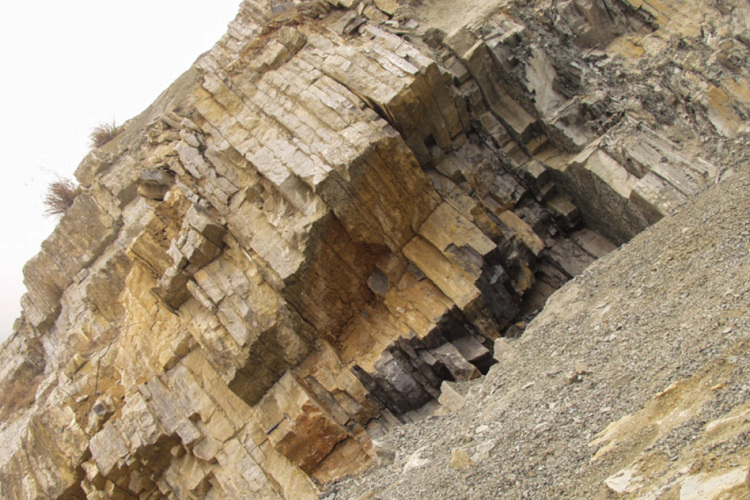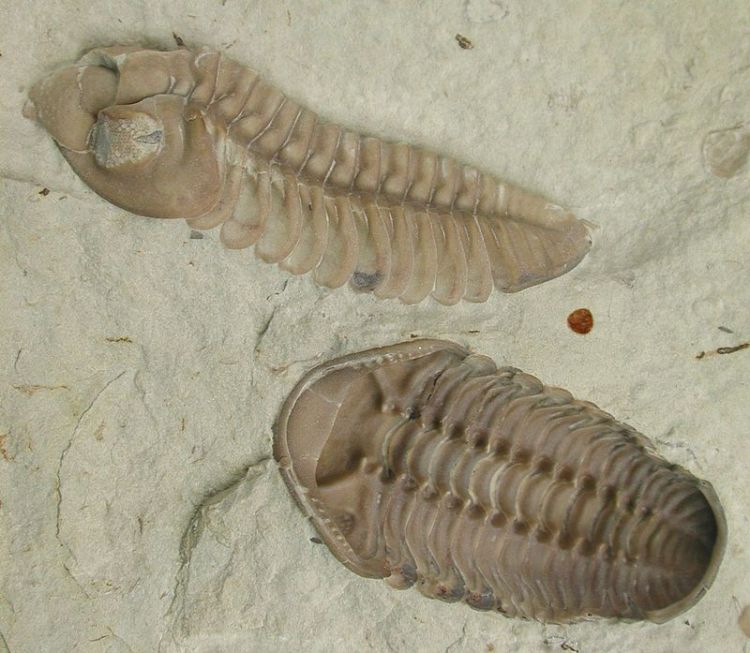Extinction is the ultimate fate of all species. The fossil record indicates that more than 95% of all species that ever lived are now extinct. Over the last 3 decades, mass extinction events have become the subject of increasingly detailed and multidisciplinary investigations. In 1982, Jack Sepkoski and David M. Raup used a simple form of time series analysis at the rank of family to distinguish between background extinction levels and mass extinctions in marine faunas, and identified five major extinction events in Earth’s history: at the end of the Ordovician period, Late Devonian, End Permian, End Triassic and the End Cretaceous. These five events are know as the Big Five. The most recently identified mass extinction occurred during the Middle Permian, about 262 million years ago, and it was first recognised in the marine realm as a turnover among foraminifera, with fusulinaceans among the principal casualties.
A central question in the understanding of mass extinctions is whether the extinction was a sudden or gradual event. This question may be addressed by examining the pattern of last occurrences of fossil species in a stratigraphic section. Also, the geochemical history recorded in marine sediments preserves a valuable record of environmental change during mass extinctions. However, stratigraphical processes of sediment accumulation could affect the chronology of environmental change. And of course, the Signor–Lipps effect complicates the timing of extinction.
The last occurrences of fossil species generally predate the times of extinction. Based on principles of sequence stratigraphy, marine ecology, and evolution, numerical models of fossil occurrences in stratigraphic sections suggest that the last occurrences of fossil species are controlled by stratigraphic architecture. In some cases, stratigraphical architecture can give the illusion of a double pulse or even a triple pulse of extinction (Holland, 2015).
The Cambrian and Lower Ordovician record involve the abrupt termination of many shallow-water trilobite lineages, a reduction in the number of biofacies across the shelf, and the immigration and origination of new lineages; and in many locations, the extinction is closely associated with an unconformity. With the notable exception of the end-Cretaceous extinction, mass extinction events have similar stratigraphical expressions. In depositional dip settings, they are recorded as a single cluster of last occurrences that is closely associated with a major flooding surface, which in some cases is combined with a sequence-bounding subaerial unconformity. Where depositionally downdip sections are available, such as for the Late Ordovician and the Late Devonian, two clusters of last occurrences are present. They may suggest discrete pulses of extinction, although they are equally consistent with a more prolonged extinction. In the Late Devonian, the faunal changes occur in three separate episodes, with the Taghanic event at the end of the Givetian, the Kellwasser event at the end of Frasnian and the Hangenberg event at the end of the Famennian. Of these, the Kellwasser event is the largest. One of the characteristics of the Kellwasser event is that the extinction was more severe in shallow-water faunas, and the stratigraphical pattern of last occurrences is consistent not only with a pulse of extinction timed with the flooding surface, but also with a more protracted interval of extinction. (Holland et Patzkowsky, 2015)
References:
Holland, S. M., Patzkowsky, M. E. (2015), The stratigraphy of mass extinction. Palaeontology. doi: 10.1111/pala.12188
Bambach, R.K., Knoll, A.H. and Wang, S.C., 2004. Origination, extinction, and mass depletions of marine diversity. Paleobiology, 30, 522–542.
Steve C. Wang, Aaron E. Zimmerman, Brendan S. McVeigh, Philip J. Everson, and Heidi Wong, (2012), Confidence intervals for the duration of a mass extinction, Paleobiology, 38(2), pp. 265–277.
Seth D. Burgess, Samuel Bowring, and Shu-zhong Shen, High-precision timeline for Earth’s most severe extinction, PNAS 2014, doi:10.1073/pnas.1317692111
Wignall, P. B. 2001. Sedimentology of the Triassic–Jurassic boundary beds in Pinhay Bay (Devon, SW England). Proceedings of the Geologists’ Association, 112, 349–360

